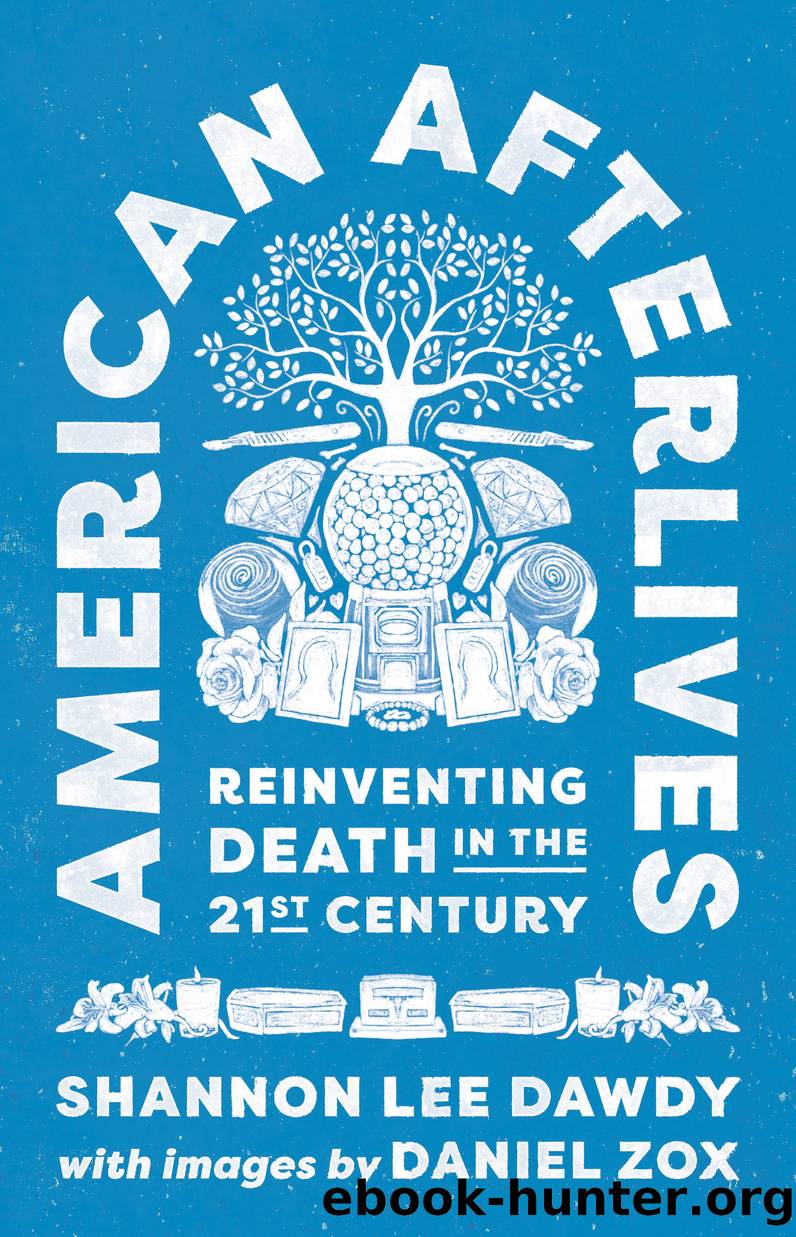American Afterlives by Shannon Lee Dawdy

Author:Shannon Lee Dawdy
Language: eng
Format: epub
Publisher: Princeton University Press
Published: 2021-07-27T00:00:00+00:00
* * *
Ω Ω Ω
* * *
While DNA Memorial is still a young start-up gambling on a speculative future, a company called LifeGem has been engineering its own mix of science and sentimentâand objects with a much deeper futureâfor the past twenty years. Dean had no prior experience in the funeral industry. Before founding LifeGem, he designed parts for the auto industry. The idea for his company came about from a preoccupation that had followed Deanâs brother for years. He was not afraid of dying. Rather, he was terrified of being forgotten. This fear arose during childhood, but it stayed with him, even as he pursued a career as an airline pilot. Dean, a trained geologist and industrial engineer, at some point realized that the carbon of the human body could be captured and used to create a synthetic diamond.
Although cremation sends the vast majority of human carbon into the air, if not overdone, small amounts from the marrow and soft tissues will remain. Recovering this carbon is not straightforward. It requires special instructions to the crematory and a multistage purification process at the LifeGem lab. But LifeGem technicians can usually isolate enough of a sample (about two hundred milliliters, just shy of a one-cup measure) to make a diamond. They donât need (or want) remains of the whole body. Their process depends upon the partibility of the dead.
LifeGem transforms human remains into synthetic diamonds through a patented process that uses extreme heat and pressure to exponentially accelerate the natural geological process of converting base carbon to diamond. This general method has been used since the 1950s for the manufacture of diamonds for industrial applications. The same process has been used since the 1970s by the jewelry market to create alternatives to blood diamonds. To be clearâthese are not cubic zirconia. Mineralogically speaking, they are âthe real dealââdiamonds.
LifeGemâs operation is located in a quiet industrial park near OâHare airport in Chicagoâs Northwest suburbs. When you walk into the nondescript single-story building, there is no fancy showroom. Instead, you are greeted by a wall of sound. You know instantly that you are in the presence of hardworking machines. A thick glass wall encloses a half dozen machines. The room looks like a medical lab and sounds like a blast furnace. The machines it houses are specialized furnaces and diamond presses that can exert nine hundred thousand pounds of pressure per square inch and an unfathomable amount of heat: 5,432 degrees Fahrenheit (3,000 degrees Celsius). During our walk-through, Dean explained that when a press finishes a diamond, the plates explode apart with a sound like a gunshot. It turns out that he didnât need to explain this, because one went off unexpectedly while we were talking. I jumped out of my skin and my ears rang. Dean apologized and seemed surprised himself. And a little embarrassed. Dean and his staff follow a meticulous technical process, but as at Memory Glass, there are limits to human control. Normally, they anticipate the completion stage for a diamond in process and wear industrial ear protectors during the expected time window.
Download
This site does not store any files on its server. We only index and link to content provided by other sites. Please contact the content providers to delete copyright contents if any and email us, we'll remove relevant links or contents immediately.
Cecilia; Or, Memoirs of an Heiress — Volume 1 by Fanny Burney(32082)
Cecilia; Or, Memoirs of an Heiress — Volume 3 by Fanny Burney(31473)
Cecilia; Or, Memoirs of an Heiress — Volume 2 by Fanny Burney(31429)
The Great Music City by Andrea Baker(30809)
We're Going to Need More Wine by Gabrielle Union(18652)
All the Missing Girls by Megan Miranda(14816)
Pimp by Iceberg Slim(13810)
Bombshells: Glamour Girls of a Lifetime by Sullivan Steve(13708)
Fifty Shades Freed by E L James(12930)
Talking to Strangers by Malcolm Gladwell(12906)
Norse Mythology by Gaiman Neil(12869)
For the Love of Europe by Rick Steves(11616)
Crazy Rich Asians by Kevin Kwan(8906)
Mindhunter: Inside the FBI's Elite Serial Crime Unit by John E. Douglas & Mark Olshaker(8734)
The Lost Art of Listening by Michael P. Nichols(7180)
Enlightenment Now: The Case for Reason, Science, Humanism, and Progress by Steven Pinker(6886)
The Four Agreements by Don Miguel Ruiz(6330)
Bad Blood by John Carreyrou(6286)
Weapons of Math Destruction by Cathy O'Neil(5860)
